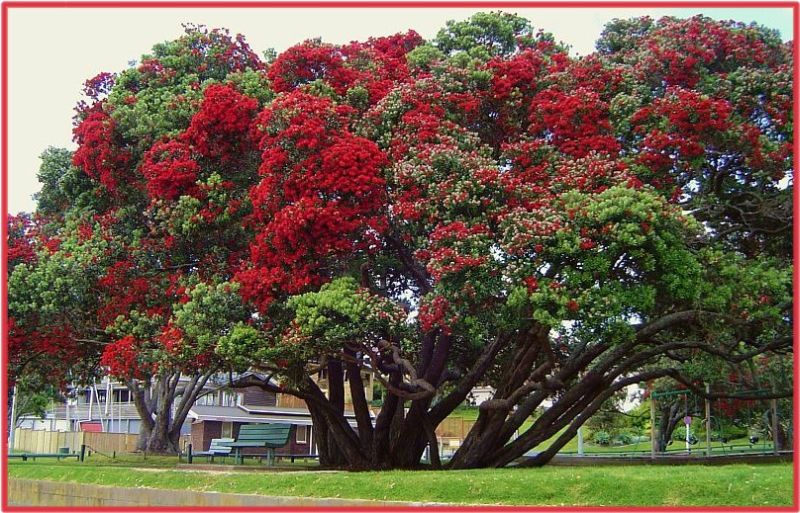6 Myths of New Zealand’s Christmas Tree: Pōhutukawa
The pōhutukawa tree has become an ingrained part of New Zealand’s culture, particularly when thinking of summer and christmas time. The iconic Kiwi summer tree is often featured on greeting cards and in prose. It has unquestionably become an important symbol for New Zealanders at home and overseas.
In 1833 missionary Henry Williams described holding a service under a ‘wide spreading pōhutukawa’ – this is believed to be one of the earliest references to the tree. In 1857 a feast put on by Ngāpuhi leader Eruera Patuone featured ‘flowers of the scarlet pōhutukawa, or “Christmas tree”’ as part of the table decorations. This was the first published reference of the pōhutukawa as a “Christmas tree”, and the name has stuck ever since.
Austrian geologist Ferdinand Von Hochstetter, who was employed by the New Zealand government in 1860 to make a geological survey of the lands, observed, ‘the pōhutukawa … about Christmas … are full of charming … blossoms’; ‘the settler decorates his church and dwellings with its lovely branches’. According to other early references the pōhutukawa has been described as the ‘Settlers Christmas tree’ as well as the ‘Antipodean holly’.
In 1941 an army chaplain by the name of Ted Forsman wrote a carol which referenced ‘your red tufts, our snow’. Forsman was serving in the Libyan Desert during World War 2 at the time. The bleak surroundings and hard slog of war would hardly be considered inspirational, but many of his fellow kiwi soldiers would have instantly been moved to thoughts of home during summer and undoubtedly appreciated Forsman’s creativity.
The Maori people consider the pōhutukawa very important to their culture and tradition. There is a legend that tells of a young Maori warrior named Tawhaki who attempted to find heaven to seek aid in his quest to avenge the death of his father. He is said to have fallen to earth and the dark red flowers of the tree represent his blood.
The most famous pōhutukawa in Maori legend is located on the edge of a cliff near Cape Reinga. The small, weathered tree is said to guard the entrance to a sacred cave through which spirits pass on their way to their ancestral homeland of Hawaiki. From this point the spirits leap off, make their way down the roots of the 800-year-old tree, and descend into the underworld on their journey home.
Pōhutukawa can live for hundreds of years if they are growing in their natural coastal environment. While pōhutukawa in your backyard could easily be 100 years old, both pōhutukawa and northern rata could probably live up to 1000 years when located near the coast.
A1 Sure Services prides themselves on providing high quality and cost effective Pōhutukawa Tree Trimming & Pōhutukawa Tree Pruning work by fully qualified and experienced arborists. We can typically meet and provide a free, no-obligation quote within 24-48 hours.
When you contact A1 Sure Services, you can rest assured that you are in good hands.

